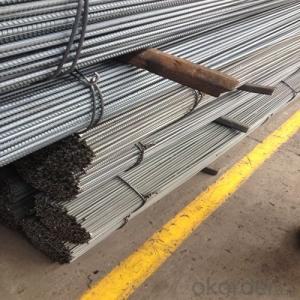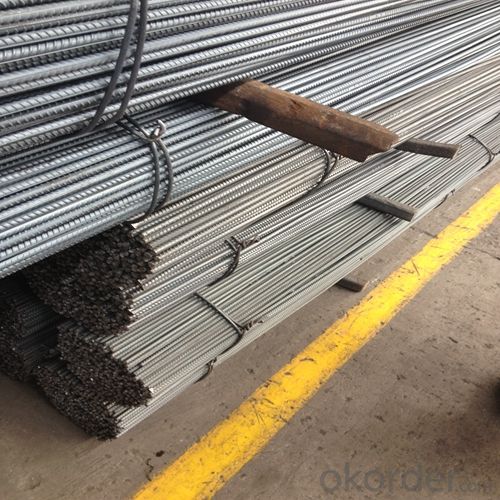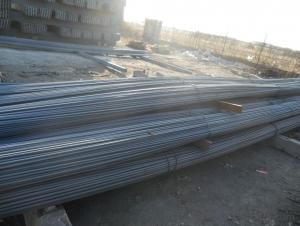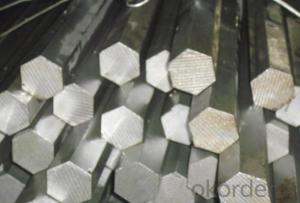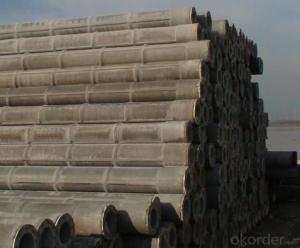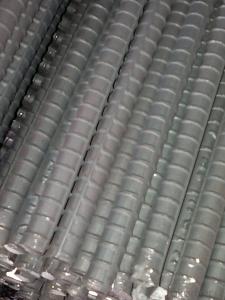Hot Rolled Steel Rebar Deformed Bar High Quality
- Loading Port:
- Tianjin
- Payment Terms:
- TT OR LC
- Min Order Qty:
- 1000 m.t.
- Supply Capability:
- 30000 m.t./month
OKorder Service Pledge
OKorder Financial Service
You Might Also Like
Product Description:
Quick Details
Standard:AISI, ASTM, BS, DIN, GB, JIS
Grade:HRB335
Diameter:10mm-40mm
Length:Normally 6~12m
Place of Origin:Fujian, China (Mainland)
Model Number:QZMM-ST001
Application:Building material, construction, road, bridge,etc
Product Name:Steel Rebars,Deformed Steel Bars,Building Material China Manufacturer
Standard:ASTM A615 /BS BS 4449 /GB HRB/ JIS G3112
Material:HRB335
Shape:Straight reinforcing bars
Technique:Low temperature hot-rolling reinforcing deformed steel rebar
Tolerance:As the standard or as your requirement
MOQ:100tons per size steel rebar
Packing details Steel:Steel rebar packed in bundle or as your requirement
Delivery:Within 30 days after deposit
Post:XIAMEN,CHINA
Packaging & Delivery
| Packaging Details: | in bundles or as customer's requirement |
|---|---|
| Delivery Detail: | Within 30days after receiving your deposit or copy of L/C |
Product Description
| Name | Steel Rebars,Deformed Steel Bars,Building Material China Manufacturer |
| Standard | ASTM A615 /BS BS 4449 /GB HRB/ JIS G3112 |
| Grade | A615 Gr40/60/75 BS 4449 Gr460,B500 GB HRB335(E) JIS G3112 SD390 |
| Diameter | 10mm-40mm |
| Length | 6-12m |
| Technique | Low temperature hot-rolling reinforcing deformed steel rebar |
| Tolerance | As the standard or as your requirement |
| Application | Building, construction, road, bridge,etc |
| Certificated | BV |
| MOQ | 100tons per size steel rebar |
| Packing details | Steel rebar packed in bundle or as your requirement |
| Delivery | Within 30 days after deposit |
| Payment | T/T or L/C |
Chemical Composition
Grade | Technical data of the original chemical composition (%) | |||||||
C | Mn | Si | S | P | B | |||
HRB335 | ≤0.25 | ≤1.60 | ≤0.80 | ≤0.045 | ≤0.045 | >0.0008 | ||
Physics capability | ||||||||
Yield Strength(N/cm2) | Tensile Strength(N/cm2) | Elongation (%) | ||||||
≥335 | ≥490 | ≥16 | ||||||
Grade | Technical data of the original chemical composition (%) | |||||||
C | Mn | Si | S | P | V | |||
HRB400 | ≤0.25 | ≤1.60 | ≤0.80 | ≤0.045 | ≤0.045 | 0.04-0.12 | ||
Physics capability | ||||||||
Yield Strength(N/cm2) | Tensile Strength(N/cm2) | Elongation (%) | ||||||
≥400 | ≥570 | ≥14 | ||||||
Usage and Applications of HRB400 Deformed Steel Bar:
Deformed bar is widely used in buildings, bridges, roads and other engineering construction. Big to highways, railways, bridges, culverts, tunnels, public facilities such as flood control, dam, small to housing construction, beam, column, wall and the foundation of the plate, deformed bar is an integral structure material. With the development of world economy and the vigorous development of infrastructure construction, real estate, the demand for deformed bar will be larger and larger..
Packaging & Delivery of HRB400 Deformed Steel Bar:
Packaging Detail: products are packed in bundle and then shipped by container or bulk vessel, deformed bar is usually naked strapping delivery, when storing, please pay attention to moisture proof. The performance of rust will produce adverse effect.
Each bundle weight: 2-3MT, or as required
Payment term: TT or L/C
Delivery Detail: within 45 days after received advanced payment or LC.
Label: to be specified by customer, generally, each bundle has 1-2 labels
Trade terms: FOB, CFR, CIF
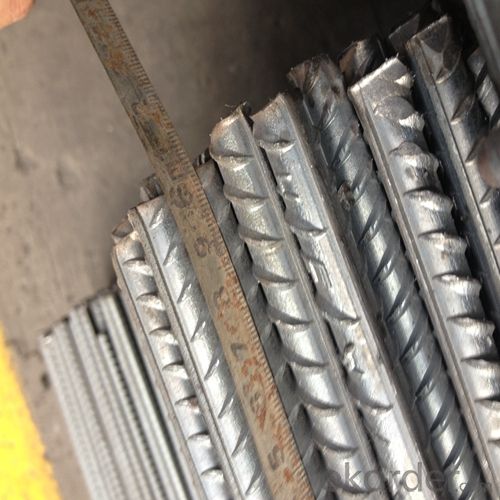
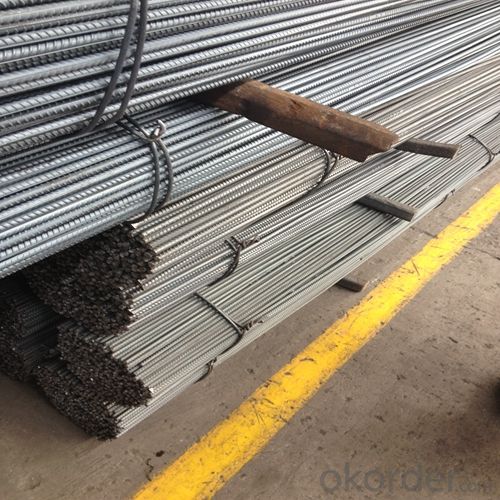
- Q: How do steel rebars affect the overall lifespan of bridge structures?
- Steel rebars play a crucial role in enhancing the overall lifespan of bridge structures. By providing reinforcement and strength to the concrete, rebars help to distribute the load and increase the structural integrity of the bridge. Firstly, steel rebars are used to reinforce the concrete components of the bridge, such as beams, columns, and slabs. This reinforcement prevents the formation of cracks and minimizes the risk of structural failure. The rebars act as a support system, enabling the concrete to withstand heavy loads, vibrations, and external forces, such as wind and earthquakes. This reinforcement helps to maintain the structural stability of the bridge throughout its lifespan. Moreover, steel rebars also resist corrosion, which is a major concern for bridge structures exposed to harsh environmental conditions, such as saltwater or high humidity. Corrosion of the reinforcing bars can lead to the degradation of the concrete and weaken the entire structure. However, steel rebars are typically coated with protective materials or made from corrosion-resistant alloys, which significantly reduces the risk of corrosion and extends the lifespan of the bridge. Furthermore, steel rebars allow for flexibility and adaptability in bridge design and construction. They can be easily bent, shaped, and positioned to meet the specific structural requirements of the bridge. This flexibility enables engineers to design bridges with different shapes, spans, and load capacities, enhancing their overall durability and lifespan. In conclusion, steel rebars have a substantial impact on the overall lifespan of bridge structures. By reinforcing the concrete, resisting corrosion, and providing flexibility in design and construction, steel rebars significantly enhance the structural integrity and durability of bridges, ensuring their safe and long-lasting operation.
- Q: What is the recommended minimum diameter of steel rebars used in earthquake-prone areas?
- The recommended minimum diameter of steel rebars used in earthquake-prone areas is typically 12 millimeters or larger.
- Q: What are the different types of steel used in the production of rebars?
- There are typically three types of steel used in the production of rebars: carbon steel, low-alloy steel, and stainless steel. Carbon steel rebars are the most commonly used and have a high tensile strength. Low-alloy steel rebars contain additional elements like chromium, nickel, or molybdenum for enhanced strength and durability. Stainless steel rebars are corrosion-resistant and often used in environments with high exposure to moisture or chemicals.
- Q: What is the difference between carbon steel and stainless steel rebars?
- Carbon steel and stainless steel rebars are both types of steel reinforcement used in construction, but they have distinct differences in composition and properties. Carbon steel rebars are made from a combination of iron and carbon, with small amounts of other elements such as manganese and copper. The carbon content in these rebars typically ranges from 0.15% to 0.60%. Carbon steel rebars are strong, durable, and cost-effective. They have good tensile strength, which is crucial for reinforcing concrete structures. However, they are susceptible to corrosion if not properly protected, especially in environments with high moisture or exposure to chemicals. On the other hand, stainless steel rebars are made from a combination of iron, chromium, nickel, and other alloying elements. The chromium content in stainless steel is typically above 10.5%, which creates a protective layer of chromium oxide on the surface of the rebar, preventing corrosion. Stainless steel rebars have excellent corrosion resistance, even in harsh environments with high humidity, saltwater, or exposure to chemicals. They are also highly durable and have high tensile strength, similar to carbon steel rebars. The main difference between carbon steel and stainless steel rebars is their corrosion resistance. Carbon steel rebars require proper protective coatings, such as epoxy or galvanization, to prevent corrosion. On the other hand, stainless steel rebars have inherent corrosion resistance due to the presence of chromium oxide layer, eliminating the need for additional coatings. Another difference is the cost. Carbon steel rebars are generally cheaper compared to stainless steel rebars. However, the total cost of a project should also consider the long-term maintenance costs associated with corrosion protection measures required for carbon steel rebars. In summary, carbon steel rebars are strong and cost-effective but require additional corrosion protection measures, while stainless steel rebars have excellent corrosion resistance and durability but come at a higher cost. The choice between the two depends on the specific project requirements, budget, and expected environmental conditions.
- Q: How do steel rebars affect the durability of a structure?
- Steel rebars have a significant impact on the durability of a structure. These reinforcements, made of high-strength steel, are embedded within concrete to enhance its tensile strength and overall structural integrity. By providing resistance against cracking and flexural stresses, steel rebars help in preventing structural failures and ensuring the long-term durability of the construction. One of the main benefits of using steel rebars is their ability to withstand tension forces. Concrete, although strong in compression, is weak when it comes to tension. When a structure is subjected to loads that cause bending or stretching, the rebars distribute these forces throughout the concrete, preventing it from cracking or breaking apart. This reinforcement improves the overall load-bearing capacity of the structure, making it more resistant to external forces such as earthquakes or heavy winds. Moreover, steel rebars also play a crucial role in preventing corrosion within the structure. Concrete is porous, and over time, moisture can penetrate it, causing the embedded reinforcement to rust. Rusting rebars expand, leading to cracks and weakening the structure. However, using corrosion-resistant rebars, such as epoxy-coated or stainless steel rebars, significantly reduces the risk of corrosion, thus enhancing the durability of the structure. In addition to their mechanical properties, steel rebars also contribute to the durability of a structure in terms of construction speed and long-term maintenance. Compared to other traditional reinforcement materials, rebars are relatively easy to install, reducing construction time and costs. Furthermore, their long lifespan and low maintenance requirements ensure the longevity and durability of the structure over time. In conclusion, steel rebars are essential for ensuring the durability of a structure. Their ability to resist tension forces, prevent cracking, and mitigate the risk of corrosion significantly enhances the structural integrity and longevity of the construction. Incorporating steel rebars into the design and construction process is crucial to creating sturdy, safe, and long-lasting structures.
- Q: How do steel rebars contribute to the load-bearing capacity of structures?
- Steel rebars contribute to the load-bearing capacity of structures by providing reinforcement and strength to concrete. When embedded within the concrete, rebars increase its tensile strength, allowing it to withstand higher loads and prevent cracking or collapsing. This reinforcement enhances the overall structural integrity and durability of buildings, bridges, and other construction projects.
- Q: What's the difference between finish rolling thread steel and ordinary thread steel?
- Steel is known as hot rolled ribbed bar. Ordinary hot rolled steel bars are made up of HRB and the minimum yield point of the brand. H, R, and B are the first letters in English for hot-rolled (Hotrolled), ribbed (Ribbed) and reinforced (Bars) three words.
- Q: How do steel rebars affect the overall durability of a structure?
- Steel rebars greatly enhance the overall durability of a structure. By reinforcing concrete, rebars increase the strength and load-bearing capacity of the structure, making it more resistant to cracks, bending, and deformation caused by external forces. Consequently, the presence of steel rebars significantly improves the structural integrity, lifespan, and resilience of the construction, ensuring it can withstand various environmental and dynamic loads over time.
- Q: What are the guidelines for repairing damaged steel rebars in a structure?
- To ensure the structural integrity of a building when repairing damaged steel rebars in a structure, it is necessary to follow several guidelines. Here are some key guidelines that should be considered: 1. Inspection: Before commencing the repair process, a thorough inspection of the damaged rebars must be conducted. This involves assessing the extent of the damage, identifying the cause of the damage, and determining whether repair is feasible or if replacement is necessary. 2. Cleaning: Proper cleaning of the damaged rebars is essential to eliminate any loose rust, scale, or other contaminants. This can be achieved by using wire brushes, sandblasting, or other appropriate cleaning methods. 3. Removal of damaged material: Any corroded or severely damaged portions of the rebars should be removed. This may require cutting out the damaged area and replacing it with a new rebar, or employing techniques such as welding or epoxy bonding to repair the damaged section. 4. Surface preparation: Adequate preparation of the rebar surface is important to ensure proper adhesion of the repair material. This may involve roughening the surface, applying a bonding agent, or utilizing other surface preparation techniques depending on the specific repair method being employed. 5. Selection of repair material: The choice of repair material will depend on factors such as the severity of the damage, the required load-bearing capacity, and the environmental conditions in which the rebars are situated. Common repair materials include epoxy resins, cementitious mortars, or other specialized repair products. 6. Repair technique: The selection of an appropriate repair technique is crucial and should comply with relevant industry standards and codes. Techniques such as welding, epoxy bonding, or mechanical splicing can be employed to repair damaged rebars. 7. Quality control: Throughout the repair process, it is important to implement quality control measures to ensure the effectiveness and durability of the repair. This may involve strength testing of the repaired rebars, monitoring the curing process, and conducting inspections to verify compliance with the guidelines. 8. Documentation: Thorough documentation of the repair process is essential, including photographs, test results, and any relevant certifications or warranties. This documentation serves as a valuable reference for future maintenance and provides evidence of the repair work carried out. It should be noted that the guidelines for repairing damaged steel rebars may vary depending on project-specific requirements, local building codes, and the recommendations of structural engineers or repair specialists. Therefore, consulting with experts in the field is crucial to ensure safe and effective repair work.
- Q: What is the impact of steel rebars on the carbon footprint of a structure?
- The use of steel rebars in construction has a significant impact on the carbon footprint of a structure. Steel production is known to be a highly carbon-intensive process, contributing to greenhouse gas emissions and climate change. The extraction and processing of iron ore, along with the energy-intensive processes involved in converting it into steel, result in substantial carbon dioxide (CO2) emissions. Steel rebars are typically used to reinforce concrete structures, such as buildings, bridges, and highways. The production of cement, a key component of concrete, is also a major contributor to carbon emissions. Thus, the carbon footprint of a structure is influenced by both the steel production and the concrete manufacturing processes. However, it is important to note that steel rebars can also have a positive impact on the carbon footprint of a structure. Steel is a highly durable material, with a long lifespan that can exceed the lifespan of the structure itself. This durability reduces the need for frequent maintenance, repairs, and replacements, which would otherwise consume additional resources and emit more carbon. Furthermore, steel rebars can enhance the structural strength and resilience of a building, allowing it to withstand extreme weather events and seismic activities. This increased durability can extend the lifespan of the structure, reducing the need for new construction and associated carbon emissions in the long run. To mitigate the carbon footprint of steel rebars, efforts are being made to improve the efficiency of steel production processes, such as adopting cleaner technologies and using recycled steel. Additionally, there is a growing trend towards incorporating sustainable materials, like bamboo or fiber-reinforced polymers, as alternatives to steel rebars in construction. In conclusion, while the production of steel rebars has a significant carbon footprint, their use in construction can contribute to the overall sustainability of a structure by providing durability and reducing the need for frequent replacements. However, it is crucial to continually explore and implement more sustainable alternatives to steel rebars to further minimize the carbon impact of construction.
Send your message to us
Hot Rolled Steel Rebar Deformed Bar High Quality
- Loading Port:
- Tianjin
- Payment Terms:
- TT OR LC
- Min Order Qty:
- 1000 m.t.
- Supply Capability:
- 30000 m.t./month
OKorder Service Pledge
OKorder Financial Service
Similar products
Hot products
Hot Searches
Related keywords
